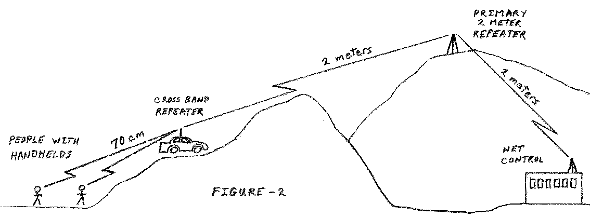

Welcome to the Long Island Patriot Radio Field Day Event. This event has been put together as a combined cooperative exercise between local patriot groups
While we  may all consider ourselves patriots, constitution supporters or Minutemen, ready to go at a moment’s notice, what we need to keep in mind is that communication, whether it be between members of our own group or with assistance of cooperating groups, will be CRITICAL to our ability to respond to any crisis, be it a disaster or foreign or domestic threat. In any of these scenarios the loss of power and thereby internet and cellular communications will render any preparations useless, unless alternate means of communication has been planned for, prepared and practiced.
may all consider ourselves patriots, constitution supporters or Minutemen, ready to go at a moment’s notice, what we need to keep in mind is that communication, whether it be between members of our own group or with assistance of cooperating groups, will be CRITICAL to our ability to respond to any crisis, be it a disaster or foreign or domestic threat. In any of these scenarios the loss of power and thereby internet and cellular communications will render any preparations useless, unless alternate means of communication has been planned for, prepared and practiced.

In the event of any hostile situation, standard operating procedure is to target command, control and communications. The first thing we can expect under those conditions is the cutting of communications capabilities.
Whatever the challenge might be, in order to be effective in any emergency situation, communications will be of paramount importance.
 • We have all recognized this critically important shortcoming in our planning, and have taken the first step in the acquisition of basic communications equipment.
• We have all recognized this critically important shortcoming in our planning, and have taken the first step in the acquisition of basic communications equipment.
• The radio of choice for patriot ground units is the Baofeng UV5R or variation thereof. A baofeng handheld radio is a dual band radio that operates in VHF 2 meter band, and UHF also known as the 440mhz band.
 These radios, while capable of being programmed with 128 channels, and the ability to monitor 2 channels at 1 time, come unprogrammed. As a whole, that makes the radio you just unboxed … a brick. It is only a shadow of the capability it can offer you in a crisis.
These radios, while capable of being programmed with 128 channels, and the ability to monitor 2 channels at 1 time, come unprogrammed. As a whole, that makes the radio you just unboxed … a brick. It is only a shadow of the capability it can offer you in a crisis.
It is our objective to program all of your radios with similar channels and frequencies that will greatly increase your ability to “reach out and touch somebody” in an emergency situation. With this goal in mind, a state communications guide was put together by communications specialist, Tom Sullivan.
 This includes 50 standard channels, encompassing standard frequencies used by commercial Motorola handhelds, the types used in stores and by security, as well as 14 FRS ( Family Radio Services ) frequencies, the frequencies used by walkie talkies, also GMRS ( General Mobile Radio Service) frequencies. In addition, a number of HAM Radio channels were also designated in both the VHF and UHF bands.
This includes 50 standard channels, encompassing standard frequencies used by commercial Motorola handhelds, the types used in stores and by security, as well as 14 FRS ( Family Radio Services ) frequencies, the frequencies used by walkie talkies, also GMRS ( General Mobile Radio Service) frequencies. In addition, a number of HAM Radio channels were also designated in both the VHF and UHF bands.
By attempting to standardize these frequencies across the state, there is a much greater probability that you will be able to contact assistance from like-minded people, should you find yourself on the move out of our immediate area, as well as within the confines of our Long Island borders.
To enhance the benefits of having handheld radios all programmed to similar frequencies, I spent a good deal of time adding programming for radio repeaters on Long Island and the surrounding areas. Broadcasting on most of these frequencies requires an FCC license. While you may think that you won’t concern yourself with licensing, you would be doing yourself a great disservice. At the very least, getting licensed will help provide you with a great education on how to use your radio to communicate, and at the most will allow you the opportunity to use resources that are not available to unlicensed operators. Like Radio Repeaters.
Again, the importance of this is, that if you have not practiced using this tool when information and resources are readily available, it will be nearly impossible to figure out how to use when you have no access to the internet or ability to call a friend for help. Radio repeaters are operated by private radio clubs. In most cases they are continuously monitored. If you are unlicensed… you will not be able to use them, and that will greatly limit the capabilities of your new hand held radio.
 These radio waves, like light or sound waves, travel in a straight line. Here on Long Island we are fortunate that our surrounding terrain is relatively flat.
These radio waves, like light or sound waves, travel in a straight line. Here on Long Island we are fortunate that our surrounding terrain is relatively flat.
 However, what you may not realize and connect with these conditions, is that as a sphere, the curved surface of the e
However, what you may not realize and connect with these conditions, is that as a sphere, the curved surface of the e
arth limits the distance we can see at ground level.The nature ofthe VHF and UHF bands used by your baofeng radios is that they work in line of sight, and are limited by the power of your radio.
A person st anding with a handheld radio, with the antenna held at 6 feet above the ground has a line of sight of only 3 miles. If the receiving radio is also holding their radio with the antenna height at 6 feet, the range is increased to 6 miles. This will of course be limited and reduced by trees, structures and other obstacles that may be present between the transmitting and receiving radios.
anding with a handheld radio, with the antenna held at 6 feet above the ground has a line of sight of only 3 miles. If the receiving radio is also holding their radio with the antenna height at 6 feet, the range is increased to 6 miles. This will of course be limited and reduced by trees, structures and other obstacles that may be present between the transmitting and receiving radios.

 1) HEIGHT – By increasing the height of your antenna, you increase the line of sight and range to the horizon. This can be done by putting up a high antenna or by moving to higher ground.
1) HEIGHT – By increasing the height of your antenna, you increase the line of sight and range to the horizon. This can be done by putting up a high antenna or by moving to higher ground.
2) REPEATERS – Radio repeaters are usually up high on towers where they can be “seen” by your radio from great distances. Once a signal is received by a repeater, it is rebroadcast at high power from a great height that greatly increases the range of your handhelds. Repeaters cannot be used by unlicensed operators.
 3) Mobile and portable repeaters – A crossband repeater in a car can be moved to a central location where it has good height, and can rebroadcast signals, there by extending the range of nearby hand helds. Crossband means it picks up a signal in one radio band, and re-broadcasts it in another band.
3) Mobile and portable repeaters – A crossband repeater in a car can be moved to a central location where it has good height, and can rebroadcast signals, there by extending the range of nearby hand helds. Crossband means it picks up a signal in one radio band, and re-broadcasts it in another band.
Since we recognize that the majority of our people with radios do not have licenses, and that backup power on repeater systems will only operate for a limited time, the objective of this exercise is to come up with a communication strategy that allows for messages to be sent over the widest area utilizing the conditions available to the majority of members of the various groups. For this, we will be limited to frequencies that unlicensed operators can use, and will not be able to use normal repeaters.
We will instead use the terrain of Long Island to maximize our radio range. This will require people moving to nearby hill tops to extend range and establish a communication network.

By developing a standard communication protocol and using our surrounding geographic features, like the Wheatley Heights Ridge, or the tops of Dix Hills and Hauppauge, all the way through the heights of Highland Park we can ensure that in an emergency, we can get coverage and messages to all of Long Island and the surrounding areas.
(Additional info available in Members Section)





Be the first to comment